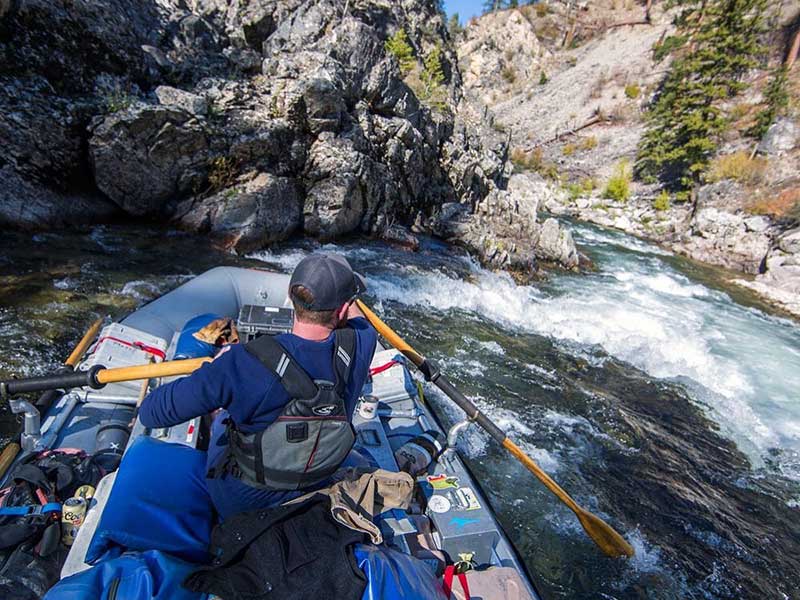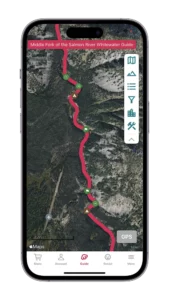About Pistol Creek Rapid
The name Pistol Creek is from the Sheepeater Indian War. Like many names on the Middle Fork of the Salmon, the name was derived from the calvary that came into the corridor to fight the Sheepeater Indians. Upstream of Pistol are many tributaries named after the war; Mortar Creek, Cannon Creek, etc. As you continue downstream you’ll continue to encounter more sites named from the war. On July 24, 2006, Lake Creek blew out, which caused ~60 logs to wedge in this rapid creating an impassable river until it was blasted by the Forest Service.
How to run Pistol Creek
If you’re unsure of the line, the scout is a pleasant one-mile walk, which provides a terrific vantage point directly above the S-turn. If you want to photograph your group, bring your camera. If you were to scout, it’s best to pull over on the river right above Lake Creek rapid. During high water, this is the only eddy from Lake Creek through Pistol Creek.
In diagraming the rapid, it’s important to note there are two entrance channels. The far left of the rock island, usually run below 2.5 ft. And the far-right of the rock island, usually run above 2.5 ft, but you can scrape down much lower if you’re willing to risk pushing a boat for a bit. The S-turn has a rock ledge on the river right, immediately followed by a sharp right turn into a sheer wall. The higher the flows, the more dramatic the current will push you from the rock ledge into the wall. At flows above 4 feet, the rock ledge becomes a large hole. Making for a tricky, but doable move, splitting the hole and the wall.
Below 2.5 ft: As flows start dropping, the rock shelf in the middle becomes more defined and makes the right channel less accessible. Although, there are a number of boaters who will happily push their boat through the right channel to avoid going left. Taking the left entrance is a ton of fun, but can be consequential for your raft. Many boats have torn their floors going left (see video below).
The left channel has a fun drop, with a very sharp horn-shaped rock in the center. You can go either left or right of the horn-rock. If you go left, the current will take you over there. It can be a bit deceiving, and your spider senses may tingle as you get close to the left wall, and you may start pulling back right. Don’t do it! You’ll hit the horn, and make for an epic story. If you decide to go right of the horn, you’ll need to pull away from it, just make sure you don’t pull to far and bounce off the center island. You may hit the drop side ways.
Above 2.5 ft: When the river is above 2.5 ft, the most prevalent and easiest line is to enter far right of the rock island. Ideally, 5-10 feet off of the right bank. As the pace of the river speeds up, it’s important to keep the boat straight. This will help you punch the hole or wave at the bottom of the right channel, and set you up for the “S” turn. From the bottom of the right channel to the notorious Pistol Creek wall the key is to be in the middle of the channel, pushing or pulling away from the rock ledge on the right. Once you feel you can miss the ledge, pivot your boat and start pulling hard right to avoid the wall. It’s helpful to use the pillow coming off the rock ledge to navigate away from the wall. Finding the balance between missing the rock ledge, and having enough time to pull away from the wall is the key move.
High flows: When the water is high, above 4 ft, it is recommended to scout Pistol Creek. The current will be swift and push hard into the wall. Taking the right channel will set you up for success in navigating the S-turn. The basic line is to thread the needle between the ledge hole on the right and the wall on the left. Staying off the wall is key at high water.








